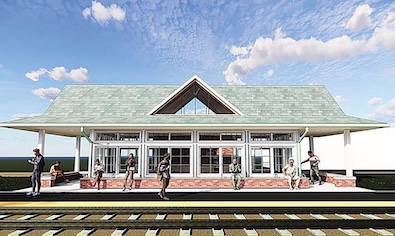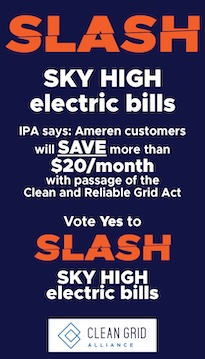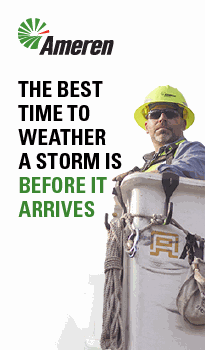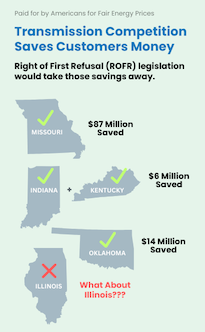Ten years and $9 million
Tuesday, Jun 24, 2025 - Posted by Rich Miller
* More than eight years after the old station was destroyed, a groundbreaking ceremony was held for a new station, which won’t be completed for another two years and is projected to cost almost $9 million…
The 115th Street Morgan Park Metra stop along the Rock Island Line is set for a major renovation, with members of the Metra Board of Directors and local officials recently gathering for a ground-breaking ceremony.
On June 16, Metra began the $8.69-million project to improve the 115th Street Morgan Park Station on the Rock Island Line.
The renovation, expected to be completed in 2027, will replace the existing platform shelters, create a new plaza and sidewalks, and address stormwater management needs.
Since 2017, the 115th Street Morgan Park stop has not had a depot. The original station, located at 1982 W. 115th St., sustained extensive damage from a fire in May 2017 and was later demolished.
* This is what commuters are getting for almost $9 million…

Not trying to pick on Metra here, just pointing out how long it takes to build anything - and how expensive it is.
* Of course, that little station pales in comparison to the $80 million Damen Green Line Station and is barely a speck of dust next to the CTA’s $5.75 billion Red Line extension - which works out to a mind-boggling billion dollars per mile.
* The High Speed Rail Association looked at this a few years ago…
One factor is the inappropriate use of consultants in the U.S. “Oftentimes, what we’ve found is that consultants are brought on to answer the questions of, What do we need to be doing?” [Eric Goldwyn, who leads the Transit Costs Project], said in a recent interview with the publication Governing. “Rather than an agency telling the consultant what they need to be doing, the consultant starts to do stuff, and the agency is like, ‘Well, that’s not really what we want. We need you to go study this other thing.’ They’re billing you by the hour and those costs accumulate.”
Labor costs are a second driver of the high costs. The issue isn’t wages per se, since most European countries pay equivalent or higher wages for construction work. It’s more about the overall number of workers employed on projects, along with the deference to car culture in the U.S.—which not only slows down projects but leads to workers being paid for overtime and overnight shifts. “If you don’t let a lane or two of traffic be shut down so they can dig a big hole,” Goldwyn said, “that just means they’re going to dig it much more slowly, and they’re going to have to dig it at weird hours of the day, so it’s going to be much more expensive. If you just said, ‘Yeah it’s going to be annoying, but let’s just do it and get it over with,’ that would be, I would argue, a better way to go.”
The relative lack of standardization in U.S. projects is a third key factor. Countries with lower construction costs emphasize standardization and “really trying to economize as much as possible,” according to Goldwyn. “In the States, we have this tendency to customize and make everything bespoke,” he said in the Alliance webcast. “The issue is that if you’re designing everything as one-off, you don’t save any money in your design,” and you can’t apply the lessons learned—or the potential cost savings—moving forward.
A fourth factor is that there are so many stakeholders with their own agendas in the U.S. “One of the things that’s interesting in this research is how often government agencies or utility companies gum up these projects because they want something” in exchange for doing their job, Goldwyn said. “There’s all these opportunities for extraction, and there needs to be someone at a high enough power, like a mayor, who is saying, ‘Cut the crap. We need to get this done. . . . You can’t keep trying to extract more and more bribes from these megaprojects.’”
Discuss.
* Related…




















- Just Me 2 - Tuesday, Jun 24, 25 @ 12:48 pm:
I don’t have the details on this project, but typically Metra doesn’t build or manage the neighborhood stations. Metra is responsible for the platform and it is the municipality that is responsible for the station around it.
There are exceptions of course.
- Just Me 2 - Tuesday, Jun 24, 25 @ 12:50 pm:
Oh, and it is also expensive to build around a functioning rail line as the trains come by so frequently and for safety reasons work has to of course stop, but also equipment staging is also a real pain in the you-know-what.
- Jurist - Tuesday, Jun 24, 25 @ 12:56 pm:
Also, it’s a flag stop with low ridership compared to the other Rock Island-Beverly branch stops. The HSRA article is a great reference, thanks for sharing.
- DuPage Saint - Tuesday, Jun 24, 25 @ 1:00 pm:
The article mentioned standardization and I think that is a key. Have several different designs and use them over and over. You would save costs and time. Fast food joints do not have to reinvent the wheel every time hey build
- Chicagonk - Tuesday, Jun 24, 25 @ 1:05 pm:
And they could have just put the money into the Rock Island and Metra Electric lines.
- Cool Papa Bell - Tuesday, Jun 24, 25 @ 1:10 pm:
=just pointing out how long it takes to build anything=
Transit adjacent. I think of this every time I pass the torn down rest stops just north of Springfield. I think its going to be 2+ years (maybe more) from the time they were closed, torn down and rebuilt.
We are talking about what 2000 square feet with 15 bathroom stalls and a lobby? That’s a job that takes more than 2 years?
I guess the “cut the red tape” line is as over used as the “waste, fraud and abuse” line is. But I sure wish we as a state could find a way to move these projects along.
- NorthSideNoMore - Tuesday, Jun 24, 25 @ 1:12 pm:
Wondering if ridership matters may have contributed to the delay/need to replace the old one.
- Quad Cities - Tuesday, Jun 24, 25 @ 1:14 pm:
The blue state challenge - completing projects!
In 2010, the new Chicago-to-Moline train was announced with fanfare. Moline and surrounding cities with federal help built a new train station and hotel to prepare for what was supposed to come in 2015. The year is 2025 and the project hasn’t started.
- Old IL Dude - Tuesday, Jun 24, 25 @ 1:18 pm:
Was hoping that the nearly $6B for the Red Line extension could be reimagined as $1B for AI-assisted bus rapid transit on a similar route. The remaining cash could be used for the so-called transit cliff.
- Rich Miller - Tuesday, Jun 24, 25 @ 1:21 pm:
===The remaining cash could be used for the so-called transit cliff.===
Horrible idea to use one-time money for ongoing expenses.
- Google Is Your Friend - Tuesday, Jun 24, 25 @ 1:36 pm:
Not saying this couldn’t be done less expensively or better, but it seems like an expensive key here is “and address stormwater management needs.”
- Old IL Dude - Tuesday, Jun 24, 25 @ 1:40 pm:
Rich, you think the $6B for the Red Line extension is a wise idea? It’s over $1M per foot. The Amtrak higher speed rail project from Chicago to STL was less than $2B and that was 284 miles. Ay yi yi …
- ArchPundit - Tuesday, Jun 24, 25 @ 1:41 pm:
—The article mentioned standardization and I think that is a key. Have several different designs and use them over and over.
I don’t think they have to be replicas, but reusing design elements alone could help a lot instead of starting from scratch.
Part of the consultant problem is we don’t keep some of that expertise on staff. While that’s a cost, employees tend to understand the goal better. In some cases, yes the accounting sucks, but we could also share employees between agencies.
- OneMan - Tuesday, Jun 24, 25 @ 1:42 pm:
One way to do it faster. A 3D-printed train
station in Japan. It’s too small, and the like, but overall it’s an interesting idea.
https://www.youtube.com/watch?v=182f3gk2eB0
- James the Intolerant - Tuesday, Jun 24, 25 @ 2:45 pm:
It is a $9M warming station.
One would think since Metra payes $30M annually for a Project Management Organization they could do better.
As stated earlier, very low ridership station.
- Simon R. - Tuesday, Jun 24, 25 @ 2:46 pm:
== just pointing out how long it takes to build anything - and how expensive it is. ==
Amen. This is the subject of Ezra Klein’s new book “Abundance.” It’s a must read for Democratic policy makers.
Here’s another example of this problem from the “City That Works” Substack on the Red Line extension:
“In 1985, the CTA’s Final EIS (Environmental Impact Study) for the Orange Line ran 378 pages. The 2022 Final EIS for the Red Line Extension is 50 times longer, at 17,899 pages. That’s for a project that’s half as long.”
An EIS is all well and good, but c’mon. Good intentions can become a ridiculous burden. You can see evidence of this if you read the full Metra station story linked above. A local NGO didn’t think the $9 million was good enough….wanted a grander station more aligned with local architecture. Again, well intended, but expensive and time consuming.
We have to do better.
- walker - Tuesday, Jun 24, 25 @ 3:23 pm:
“”Ezra Klein’s new book “Abundance.” It’s a must read for Democratic policy makers”"
. Yes SimonR ++
He calls out Chicago housing advocates and supporters especially, as unintentionally causing our own shortfalls on affordable housing.
- Amalia - Tuesday, Jun 24, 25 @ 4:30 pm:
so maybe the stormwater management issues include addressing that on the plaza that is also being constructed. still seems like lots of money for this station. but, if we’re doing comparisons, how much money did the Legislature provide for some school project in the district of the Speaker? and, yes, the Red Line extenstion is too expensive.
- Blake - Tuesday, Jun 24, 25 @ 4:35 pm:
This is the kind of thing both in time & cost that drives me towards Abundance